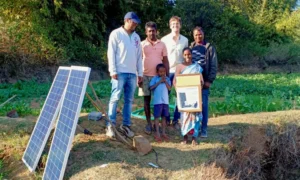After five years of groundwork led by 1,000 volunteers across the length and breadth of Kerala, the southern state now has its atlas of the bird species found in its rich biodiversity.
The groundwork for the project, which began in 2015 culminated on September 13, 2020 and generated a database consisting of over 300,000 records of 380 bird species. The data consists of the presence records of these species in two seasons across 4,000 sites in Kerala.
A press statement issued by the Kerala Bird Atlas project mentioned that approximately 70 per cent of the Kerala bird species were recorded. The first peer-reviewed publication of the atlas was announced in the Current Science journal on February 8, 2022 and was titled as Kerala Bird Atlas 2015–20: features, outcomes and implications of a citizen-science project .
“When an organisation used citizens to collect data, it used to be called citizen science. With Kerala Bird Atlas, we defined a new meaning for citizen science. Here, the citizens actually did the science as well. Citizen scientists of the project are elated to see their earnest efforts bear fruit with this publication in the most well-respected scientific journal in the country”, Praveen J, one of the state coordinators of the project was quoted.
Also Read: Camels in Crisis: The ‘ship of the desert’ in Rajasthan on the verge of drowning
Mysore-based Nature Conservation Foundation (NCF), Bird Count India (BCI) and Coimbatore-based Sálim Ali Centre for Ornithology and Natural History (SACON) provided technical support for the project.
“Bird atlas of this extent has not been attempted anywhere in Asia. Next step is to utilize the potential of this voluminous dataset and derive academic and conservation oriented inferences. The data has been made publicly available. Our manuscript lists potential uses of this dataset. We invite students and researchers to use this dataset. I am positive that the Kerala Bird Atlas will create a momentum for citizen-science and open science in the country,” PO Nameer, Dean, College of Climate Change and Environmental Science, Kerala Agricultural University was quoted.
7. In this way, over 3,000 subcells of 1.1×1.1km were chosen to be surveyed in a systematic manner, roughly 10% of Kerala's land area. These cells were to be surveyed twice a year, during dry (Jan-Mar) and wet (Jul-Sep) seasons. pic.twitter.com/J48gn82XFI
— Bird Count India (@birdcountindia) February 9, 2022
“Every district had a team led by one or two senior bird-watchers. They conducted meetings and planned the coverage of subcells in their respective districts and kept in touch through WhatsApp groups,” the press statement stated while explaining the methodology of the survey for the bird atlas.
“Some districts sub-divided themselves into clusters and each cluster was owned by a few bird-watchers. Forest surveys were planned by district leaders inviting birdwatchers from all parts of the state and sometimes from Tamil Nadu, Karnataka and Maharashtra,” it added.



















